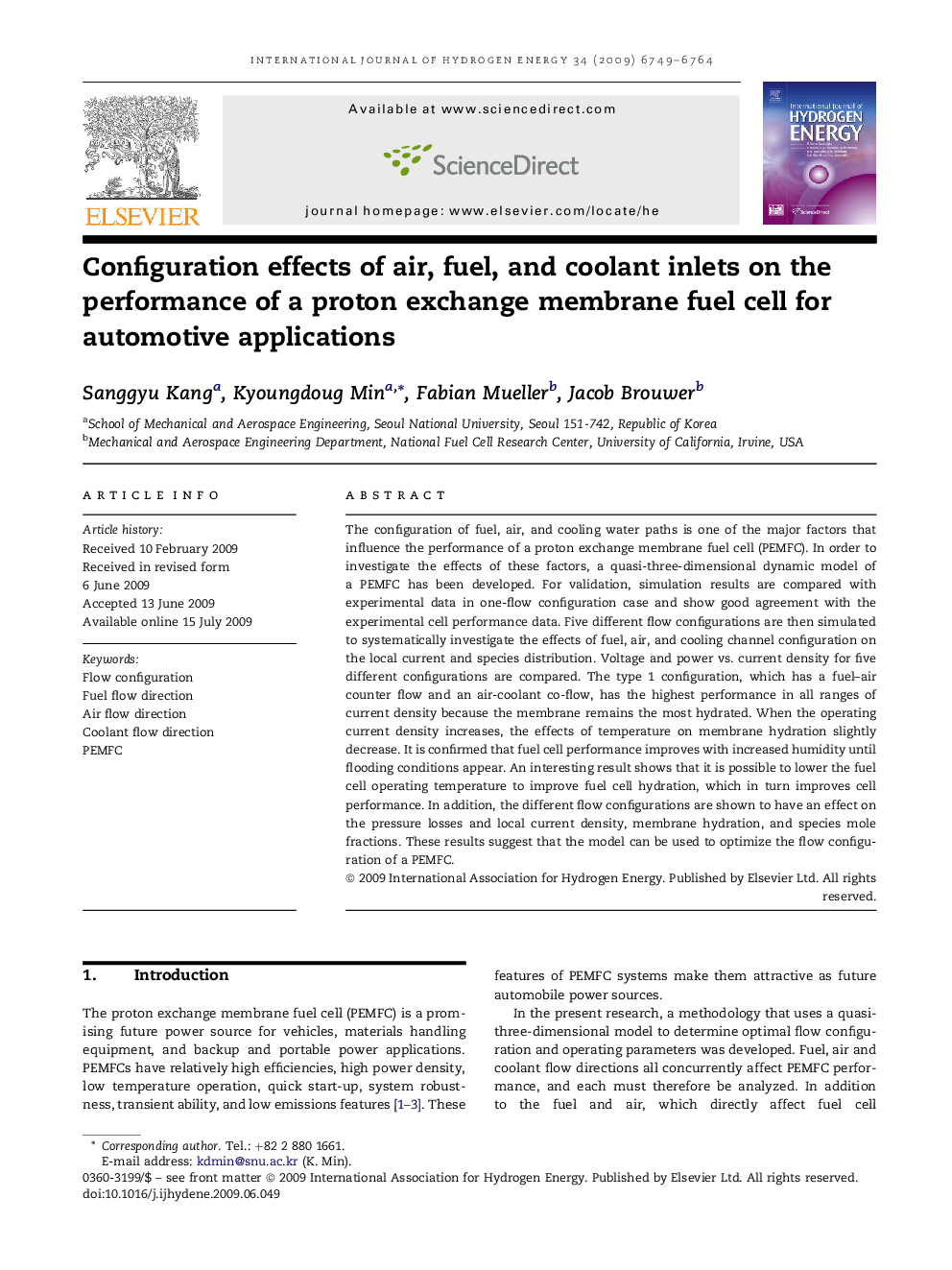| Article ID | Journal | Published Year | Pages | File Type |
|---|---|---|---|---|
| 1277631 | International Journal of Hydrogen Energy | 2009 | 16 Pages |
The configuration of fuel, air, and cooling water paths is one of the major factors that influence the performance of a proton exchange membrane fuel cell (PEMFC). In order to investigate the effects of these factors, a quasi-three-dimensional dynamic model of a PEMFC has been developed. For validation, simulation results are compared with experimental data in one-flow configuration case and show good agreement with the experimental cell performance data. Five different flow configurations are then simulated to systematically investigate the effects of fuel, air, and cooling channel configuration on the local current and species distribution. Voltage and power vs. current density for five different configurations are compared. The type 1 configuration, which has a fuel–air counter flow and an air-coolant co-flow, has the highest performance in all ranges of current density because the membrane remains the most hydrated. When the operating current density increases, the effects of temperature on membrane hydration slightly decrease. It is confirmed that fuel cell performance improves with increased humidity until flooding conditions appear. An interesting result shows that it is possible to lower the fuel cell operating temperature to improve fuel cell hydration, which in turn improves cell performance. In addition, the different flow configurations are shown to have an effect on the pressure losses and local current density, membrane hydration, and species mole fractions. These results suggest that the model can be used to optimize the flow configuration of a PEMFC.
